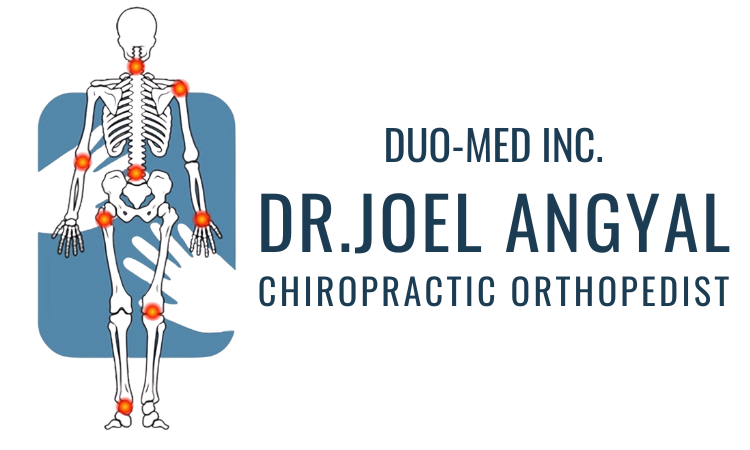FAQs for Low Back Pain
Low back pain is a common condition that affects millions of people worldwide. Dr. Joel J. Angyal, an expert in spinal health, has compiled a comprehensive FAQ to address some of the most common questions patients have about low back pain. Understanding the causes, treatment options, and preventive measures can help you manage and alleviate this condition effectively.
- Muscle Strain: Overuse, improper lifting, or sudden movements can strain the muscles and ligaments in the lower back.
- Herniated Disc: When the soft material inside a disc pushes out through a crack in the tougher exterior, it can irritate nearby nerves.
- Degenerative Disc Disease: Discs naturally wear down with age, leading to pain and discomfort.
- Spinal Stenosis: Narrowing of the spinal canal can compress nerves, causing pain.
- Spondylolisthesis: A condition where one vertebra slips over the one below it.
- Osteoarthritis: Wear and tear of the spinal joints can lead to chronic back pain.
- Infections and Tumors: Although less common, these can also cause low back pain.
- Take a Medical History: Understanding your symptoms, activity level, and any previous injuries.
- Conduct a Physical Exam: Checking your range of motion, reflexes, and areas of tenderness.
- Order Imaging Tests: X-rays, MRI, or CT scans to visualize the spine and identify issues like herniated discs or fractures.
- Perform Nerve Tests: Electromyography (EMG) can help determine if nerve compression is causing your pain.
- Medications: Over-the-counter pain relievers, muscle relaxants, or prescription medications.
- Physical Therapy: Exercises to strengthen the back and improve flexibility.
- Chiropractic Care: Spinal adjustments to relieve pain and improve function.
- Massage Therapy: Reducing muscle tension and improving circulation.
- Injections: Corticosteroid injections can reduce inflammation and pain.
- Surgery: Reserved for severe cases where other treatments have failed. Options include discectomy, spinal fusion, or laminectomy.
- Exercise Regularly: Strengthening the muscles that support your back.
- Maintain a Healthy Weight: Reducing stress on your spine.
- Practice Good Posture: Sitting and standing correctly to avoid strain.
- Lift Properly: Using your legs, not your back, to lift heavy objects.
- Stay Active: Avoid prolonged periods of sitting or inactivity.
- Stretch: Keeping your back flexible with regular stretching exercises.
- Pain Persists: Lasting more than a few weeks without improvement.
- Severe Pain: Interferes with your daily activities.
- Neurological Symptoms: Numbness, tingling, or weakness in the legs.
- Bladder or Bowel Issues: Difficulty controlling bladder or bowel movements.
- Fever: Accompanied by back pain, which could indicate an infection.
- Infections: Such as osteomyelitis or spinal abscess.
- Cancer: Tumors in the spine or metastasized from other areas.
- Fractures: Often due to trauma or osteoporosis.
- Autoimmune Diseases: Conditions like ankylosing spondylitis.
- Ergonomic Adjustments: Using supportive chairs and adjusting your workstation.
- Regular Physical Activity: Low-impact exercises like walking, swimming, or yoga.
- Healthy Diet: Reducing inflammation with a balanced diet rich in fruits, vegetables, and omega-3 fatty acids.
- Stress Management: Techniques like mindfulness, meditation, and adequate sleep.
Conclusion
Low back pain can significantly impact your quality of life, but with the right information and approach, it can be effectively managed. Dr. Joel J. Angyal encourages you to seek professional advice if you experience persistent or severe back pain and to adopt preventive measures to maintain a healthy spine. If you have any further questions or need personalized care, don’t hesitate to schedule an appointment.
By addressing these FAQs, Dr. Joel J. Angyal aims to provide valuable insights and practical advice for managing low back pain, helping patients lead healthier, more comfortable lives.
FAQs for Cold Laser Therapy
Cold laser therapy, also known as low-level laser therapy (LLLT), is a non-invasive treatment that uses low-level lasers to stimulate healing in tissues. Dr. Joel J. Angyal offers this advanced therapy to help patients manage pain and promote recovery. Here are some frequently asked questions about cold laser therapy to help you understand its benefits and applications.
Pain is not normal. Pain is your body’s way of telling you something is wrong.
Recent studies have indicated that chronic aches and pains can be an early indicator of arthritis.
2-3 days maximum. If something hasn’t resolved in a couple of days chances are good, tissue disruption has occurred and guidance is needed during healing.
Anti-inflammatories or pain killers only mask the pain; they do nothing to effect a well healed resolution of the problem.
Even with minimal damage to your car, significant damage can occur to your neck and back. Unlike your car which can have specific parts replaced, your spine must last a lifetime. We specialize in gently restoring proper motion and position of the neck and back, preventing small accidents from becoming long term problems.
Conclusion
Cold laser therapy offers a promising solution for various pain and injury conditions without the need for invasive procedures or medication. Dr. Joel J. Angyal provides expert care and guidance to ensure you receive the best possible outcomes from this innovative treatment. If you have more questions or wish to schedule a consultation, feel free to contact our office.
By addressing these FAQs, Dr. Joel J. Angyal aims to provide clarity and confidence in cold laser therapy, helping patients make informed decisions about their health and wellness.
